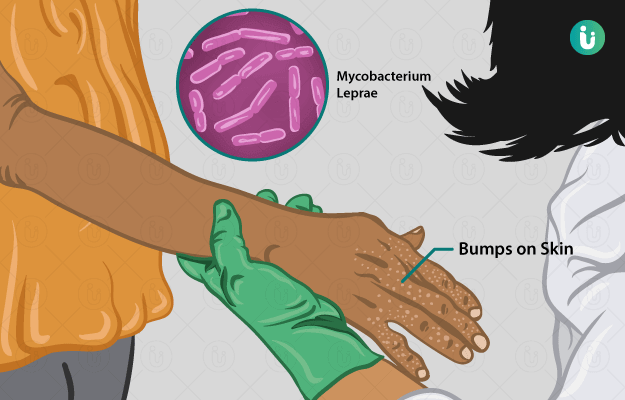What is leprosy?
Leprosy or Hansen's disease is an infection of the skin and nerves caused by Mycobacterium leprae. The condition affects the skin, mucous membranes, peripheral nerves, eyes and respiratory system.
According to the World Health Organization (WHO), leprosy possibly gets transferred through the respiratory route and via insects, apart from the largely held belief of it being spread by close contact with an infected person.
The condition is classified on the basis of skin smear results as:
- Paucibacillary leprosy (PB) – negative smears
- Multibacillary leprosy (MB) – positive smears
What are its main signs and symptoms?
The condition has visible symptoms that make it easy to detect:
- Discoloured patches of skin, usually flat
- Numb and faded lesions that are lighter than the surrounding area
- Nodules on the skin
- Dry and stiff skin
- Ulceration of soles
- Lumps on the face or ears
- Complete or partial loss of eyelashes and brows
Other symptoms include:
- Numbness and loss of sweating of the affected area
- Paralysis
- Muscular weakness
- Enlarged nerves, especially around the elbows and knees
- Effect on facial nerves may lead to blindness
In advanced stages, it may lead to:
- Crippling of feet and hands
- Reabsorption and shortening of fingers and toes
- Non-healing foot ulcers
- Nose disfigurement
- Burning sensation in the skin
- Painful or tender nerves
What are the main causes?
Leprosy is caused by Mycobacterium leprae, a bacteria that is commonly found in our environment. Gene mutation and variations increase the likelihood of getting leprosy. Similarly, changes in the immune system and inflammation also increase the chances. The disease spreads due to close contact with an infected person for long or due to inhalation of air contaminated with nasal droplets containing the bacteria.
How is it diagnosed and treated?
Leprosy is recognised by the patchiness of skin that is darker or lighter than the actual skin colour. The patches may also appear reddish. To confirm the examination findings, the doctor may conduct a skin or nerve biopsy.
The condition can be treated with a combination of antibiotics. This multi-drug therapy is important to avoid antibiotic resistance. These include dapsone, clofazimine and rifampicin. In case of allergies to these drugs, minocycline, clarithromycin and ofloxacin are effective alternatives.
To counter numbness, opt for special shoes that protect the feet and help restore normal gait. Surgery can help repair visible deformities and improve self-confidence.
Overall, the condition can be treated over a period of a year. It is important to consult your doctor immediately. Aggressive and timely treatment can cure the disease completely.

 Doctors for Leprosy
Doctors for Leprosy  OTC Medicines for Leprosy
OTC Medicines for Leprosy


















